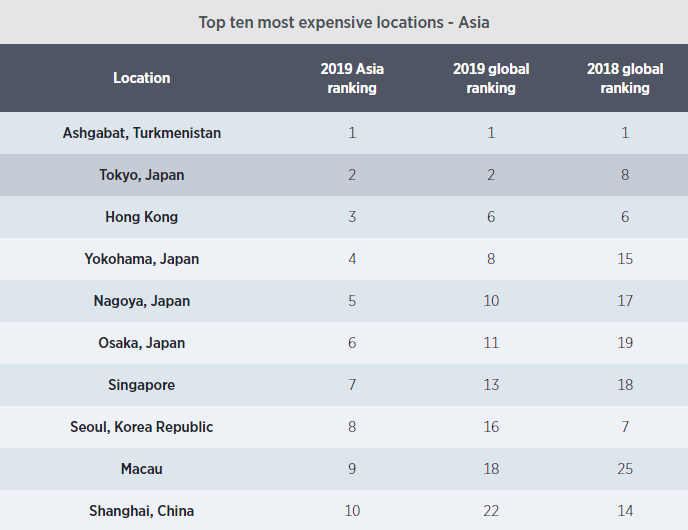Bangkok has risen 43 places since last year and 75 places in the past two years. It is now ranked 47th among the 50 most expensive cities in the world. Other places in Thailand are no exception, with Chiang Mai rising 56 places in just one year.
“Bangkok has long been considered a budget destination for tourists, but has jumped to 47th place in the world’s 50 most expensive cities, largely due to the strong baht,” ECA International said.

Bangkok - the tourist "capital" of Thailand


In the Asian rankings, the most expensive city is Ashgabat, the capital of the Central Asian nation of Turkmenistan. The city jumped from 146th place in 2017 due to high inflation and a strong local currency. The second place is still held by the Japanese capital Tokyo, mainly due to the yen's rise against the US dollar. Next is Hong Kong (China), ranked third in Asia and sixth in the world. Singapore and the South Korean capital Seoul ranked seventh and eighth, respectively, while Macau and Shanghai, China, ranked ninth and tenth.
Middle Eastern countries continue to see rising costs of living as their currencies continue to strengthen, due to their heavy reliance on the US dollar. Israel's Tel Aviv also entered the top 10 for the first time, coming in at number 9, and Jerusalem at number 12.

ECA's ranking of Asia's most expensive cities
Apart from Swiss cities that remain in the top 10 most expensive places in the world, most European cities have dropped out of the rankings since 2018. Due to Brexit, the UK capital London fell to 140th place, its lowest position since the ECA began ranking the cost of living in 2005. The US financial capital New York entered the top 20 for the first time since 2015, rising to 15th place in 2018.
ECA International
ECA International - Employment Conditions Abroad International is a consultancy that has been conducting cost of living research for over 45 years. ECA conducts two major surveys each year, in March and September, to help multinational corporations and companies incorporate cost of living into their employee payroll systems.

 VI
VI EN
EN
































